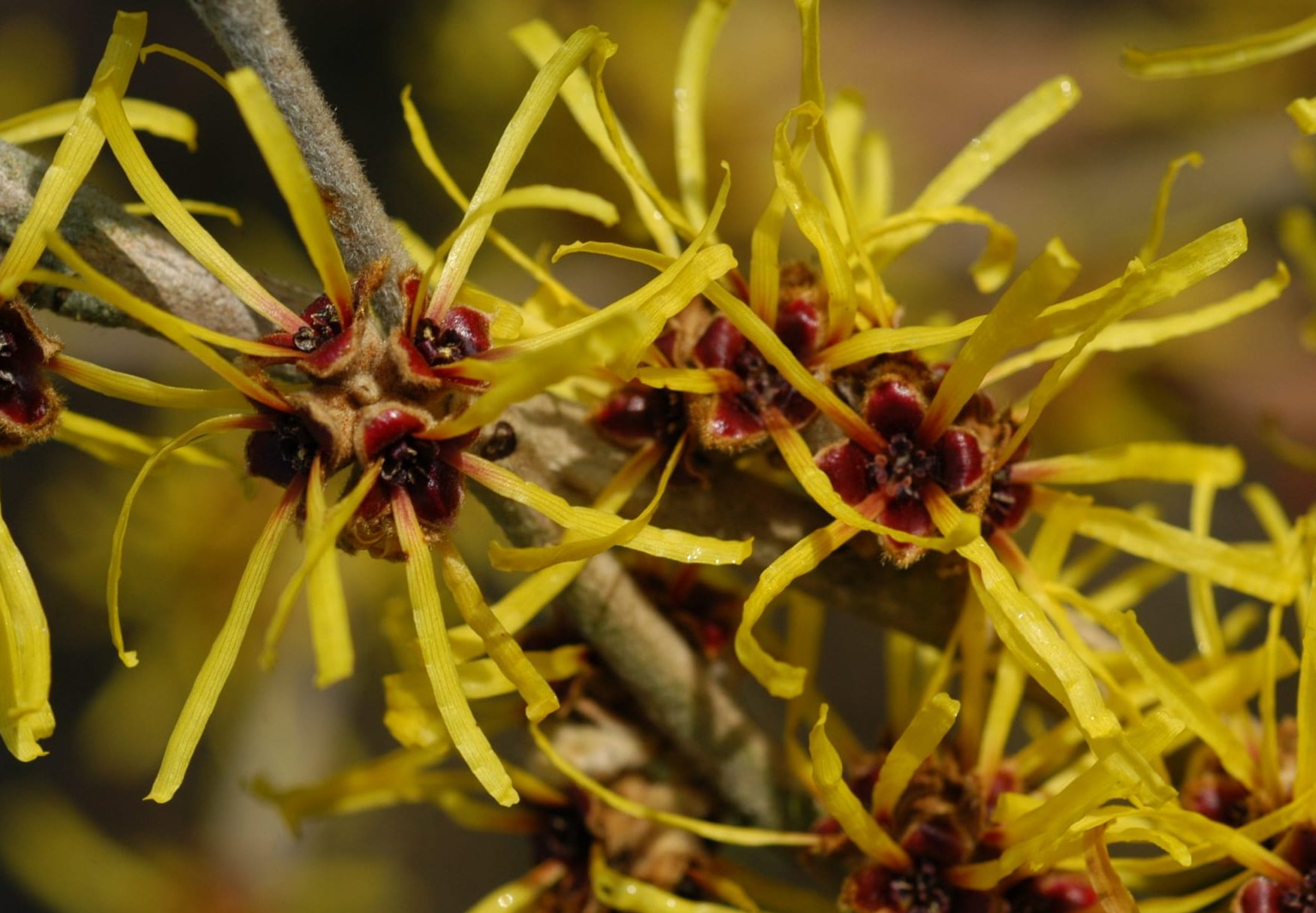Absolutely! Here’s a comprehensive article about the Hamamelis plant, structured with `
` and `
` tags instead of “, and encompassing a wide range of information.
Hamamelis, commonly known as witch hazel, is a genus of flowering plants in the family Hamamelidaceae. These deciduous shrubs or small trees are celebrated for their unique, often fragrant, winter-blooming flowers and their historical medicinal uses.
Botanical Characteristics
Hamamelis plants are characterized by:
Flowers

Their distinctive, spidery flowers, which bloom in late autumn or winter, often when the branches are bare.
Leaves
The leaves are alternate, oval, and have a wavy or toothed margin.
Fruit
Species and Cultivars
The Hamamelis genus comprises several species, each with its own unique characteristics:
Hamamelis virginiana (Common Witch Hazel)

Native to eastern North America.
Hamamelis mollis (Chinese Witch Hazel)
Native to central and eastern China.
Hamamelis japonica (Japanese Witch Hazel)
Native to Japan.
Hamamelis x intermedia (Hybrid Witch Hazel)
A hybrid of H. mollis and H. japonica.
Cultivation and Care
Hamamelis plants are relatively easy to grow, making them a popular choice for gardens.
Planting
They prefer well-drained, acidic to neutral soil.
Pruning
Minimal pruning is required.
Watering
Regular watering is essential, especially for young plants.
Soil and Fertilizing
Adding organic matter to the soil is highly beneficial.
Medicinal Uses
Hamamelis has a long history of medicinal use, particularly for its astringent properties.
Traditional Uses
Modern Uses
Witch hazel extract is used in many skincare products, including toners, cleansers, and ointments.
Ecological Importance
Hamamelis plays a vital role in the ecosystem, particularly in providing a source of nectar for pollinators during the winter months.
Pollinators
Habitat
Garden Design
Hamamelis plants are a valuable addition to any garden, offering winter interest and a delightful fragrance.
Winter Interest
Companion Plants
Landscape Use
I hope this detailed article is helpful.


